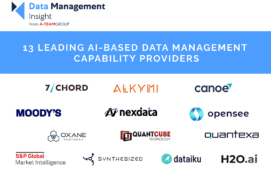By Ronan Brennan, chief technology officer, Silverfinch
The European Commission has published what is hopefully the final iteration of the Packaged Retail and Insurance-based Investment Products (PRIIPs) Regulatory Technical Standards (RTS), and with the European Parliament announcing that it has no objection to the new RTS, the industry has finally arrived at a point that seemed very distant at one stage.
There are four key areas of change in the RTS that the industry needs to be aware of:
The treatment of Multi-Option-PRIIPs (MOPs) and derogation for UCITS
Where a MOP has one or more underlying investments that are UCITS, or UCITS equivalents that today produce UCITS Key Investor Information Documents (KIIDs), the generic PRIIPs Key Information Document (KID) used for the MOP is allowed to mix both PRIIPs Summary Risk Indicator (SRI) and UCITS Synthetic Risk and Reward Indicator (SRRI) risk values in the range of risks presented as if they were from a single scale. This will, however, make a UCITS look comparatively more risky than an equivalent non-UCITs product of similar risk. Additionally, where a MOP only has UCITS as underlying investments (a ‘pure’ UCITS MOP) then the costs presented in the generic PRIIPs KID can be presented as per costs in the UCITS KIID. A further derogation has been allowed for UCITS with respect to transaction costs, with the RTS allowing UCITS to follow the ‘new PRIIPs’ methodology. This is outlined in point 21 Annex VI.
Finally, within the context of a MOP, the PRIIP provider can use the actual UCITS KIID as the Special Information Document (SID) for the underlying investment option. While the inconsistencies that arise from some of these changes are frustrating, they were nonetheless considered a welcome measure by many in the industry as it simplifies the process for UCITS managers during the grandfathering period.
Performance scenarios
The situation with the performance scenarios is quite straight forward. Where once we had three to five scenarios, we now have four mandatory scenarios and one conditional scenario, the ‘death’ one. In essence, the optional ‘significantly unfavourable’ scenario has been replaced with a new mandatory ‘stress scenario’. The changes mooted to the value at risk-based formula in the interim RTS, which were issued in late 2016, where the mean performance value had been effectively set to zero, have been rolled back to the original formula as outlined in the original RTS. So, where the original RTS was criticised as being too bullish, and the interim one criticised as being too bearish, this one is seen to be a little too bullish.
The main concerns expressed by the industry relate to possible moral hazard. This is introduced by representation of future performance, which when combined with potentially nonsensical transaction cost information that can appear to show that a fund generates a return by the simple act of trading or applying an Anti-Dilution Levy, could lead to an investor potentially bearing more risk than is understood to be the case.
Comprehension alerts
An update to article one of the RTS has tidied up the potential for a misalignment of comprehension alerts and complex products. The RTS introduces a standardised approach across PRIIPs, Markets in Financial Instruments Directive II (MiFID II) and the Insurance Distribution Directive (IDD, think MiFID II for the insurance industry). The main problem here is that the IDD and MiFID II have different implementation dates, and so the available RTS/Q&A documentation is at a very different stage of maturity – with IDD being less mature.
Biometric risk premiums and the disclosure of insurance costs
The Commission felt that the way insurance costs were being disclosed was likely to lead to confusion for the investor and would be counterproductive. The changes reflect a simplification of the disclosure to allow these costs to be rolled up under the ongoing costs.
Praise is due to the Commission for succeeding in getting the RTS accepted after its rejection last year delayed the implementation of PRIIIPs by a year. In a meeting with the Commission recently, I was very encouraged by its desire to engage with the industry. While the Commission knew it had three months to consult with Parliament, it took the view that regulated companies would be aided by a swift resolution – an important sign that the industry is being listened to.
So where does this leave the various players in the industry? As many have come to realise, this is not a simple three-page document, and nine months is not a lot of time to roll out the PRIIPs programme. However, thanks to the revised RTS, we believe there is enough information in the public domain to facilitate critical data exchange between investment managers and PRIIPs providers and support timely and efficient production of documents.
Silverfinch is a provider of regulatory data exchange solutions
Subscribe to our newsletter




